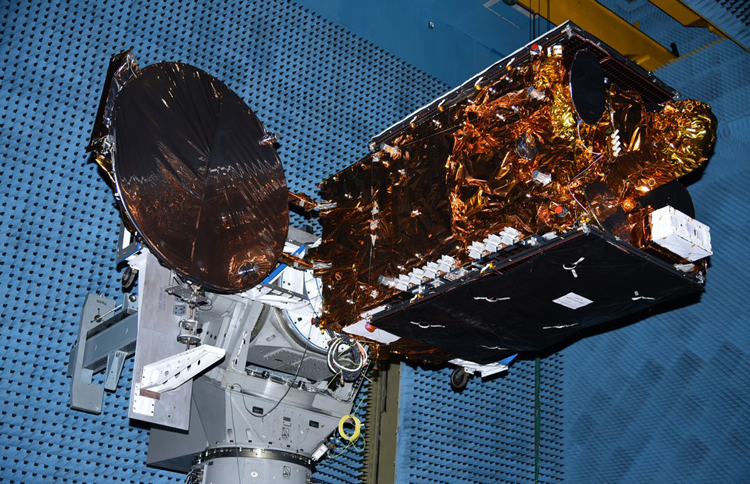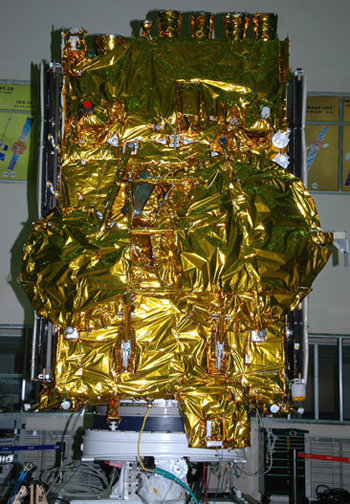INDIAN ARMED FORCES CHIEFS ON OUR RELENTLESS AND FOCUSED PUBLISHING EFFORTS

The insightful articles, inspiring narrations and analytical perspectives presented by the Editorial Team, establish an alluring connect with the reader. My compliments and best wishes to SP Guide Publications.

"Over the past 60 years, the growth of SP Guide Publications has mirrored the rising stature of Indian Navy. Its well-researched and informative magazines on Defence and Aerospace sector have served to shape an educated opinion of our military personnel, policy makers and the public alike. I wish SP's Publication team continued success, fair winds and following seas in all future endeavour!"

Since, its inception in 1964, SP Guide Publications has consistently demonstrated commitment to high-quality journalism in the aerospace and defence sectors, earning a well-deserved reputation as Asia's largest media house in this domain. I wish SP Guide Publications continued success in its pursuit of excellence.
Military Satellites
Currently, India has only two dedicated military satellites - the GSAT-7 (Rukmini) and GSAT-7A (Angry Bird) used by the Indian Navy and Air Force respectively. The GSAT-7B satellite would help the Indian Army enhance its surveillance in border areas.
 |
The Author is Former Director General of Information Systems and A Special Forces Veteran, Indian Army |

On March 22, 2022, the Defence Acquisition Council (DAC) headed by Defence Minister Rajnath Singh accorded acceptance of necessity (AoN) for military proposals worth 8,357 crore. The Ministry of Defence (MoD) has said that the hardware will be sourced indigenously. The AoN includes the GSAT-7B satellite for the Indian Army (IA), air defence fire control radars, light vehicles and image intensifiers. The MoD statement said, “Acquisition of these equipment and systems will enhance operational preparedness of armed forces by providing better visibility, enhanced mobility, improved communication and increased capability of detecting enemy aircraft.”
The Indian Navy (IN) already owns a GSAT-7 satellite. In November 2021, the DAC had accorded AoN for a 2,236-crore proposal by the Indian Air Force (IAF) to buy GSAT-7C satellite and ground hubs for improved real-time communication. The Indian Space Research Organisation (ISRO) designs and builds the GSAT-7 series of advanced satellites to provide communication capabilities to users over vast expanses including over the oceans. The GSAT-7B satellite would help the Indian Army enhance its surveillance in border areas. Currently, India has only two dedicated military satellites; the GSAT-7 (Rukmini) and GSAT-7A (Angry Bird) used by the Indian Navy and Air Force respectively.
Given the history of ISRO, there is no doubt that the Army will get its exclusive military satellite at the earliest
Also on March 22, 2022, the DAC cleared procurement of 14 defence items worth over 380 crore from start-ups and micro, small and medium enterprises (MSMEs). India has earmarked 68 per cent of the military’s capital budget for local procurement this year and the approvals are in line of Atmanirbhar Bharat. There are added concerns due to the Ukraine conflict which the US is fuelling against Russia using Ukraine as the proxy. Prolonged conflict as the US wants could disrupt supply chains and have a bearing on our defence requirements.

Of late, the government is encouraging self-reliance in the defence sector and has also increased foreign direct investment (FDI) limit from 49 per cent to 74 per cent, notified defence items that cannot be imported and has created a separate budget for buying locally-made military hardware. At the same time, approval of the AoN by the DAC for the above mentioned defence items is only the very first step of procuring military hardware and there is a long way to go before the equipment is developed and more importantly fielded. This includes issue of a request for information (RFI), detailed qualitative requirements (QR), request for proposal (RFP) and the response, selection of development agency (DA), comprehensive, technical evaluation, field trials and the like before the final contract, followed by production and fielding.
Given the history of ISRO, there is no doubt that the Army will get its exclusive military satellite at the earliest. However, in what timeframe the military will get the balance approved items remain a question mark. A number of issues need to be addressed in this context including the fact that what we call “indigenous” and ‘Make in India’, continue to have foreign content in varying measures.
During 2016-20, India was the world’s second-largest defence equipment importer, after Saudi Arabia, accounting for 9.5 per cent of the world’s overall arms trade, according to the Stockholm International Peace Research Institute (SIPRI). Concurrently, an analysis of successive reports by the Parliamentary Standing Committee on Defence revealed that in the decade between Financial Years 2010-21, the MoD had annually imported an average of 41.24 per cent of its materiel requirements worth 3,25,942.53 crore ($42.73 billion).
India has earmarked 68 per cent of the military’s capital budget for local procurement this year. There are added concerns due to the Ukraine conflict that could disrupt supply chains and have a bearing on our defence requirements
Correspondingly, India’s indigenous purchases for the same period totaled 4,64,383.01 crore ($60.88 billion) but included an assortment of imports by Indian manufacturers like engines for aircraft, tanks, and warships, gearboxes and transmission systems, missiles, radars, specialised ammunition, rockets and diverse sub-assemblies and components. However, in the race to earn brownie points in self-reliance or Atmanirbhar Bharat, the MoD deliberately did not include these items in the import list, which amounts to fooling the public.
General V.K. Singh, presently, Minister of State in the Ministry of Road Transport and Highways and Ministry of Civil Aviation, while serving as the Chief of Army Staff, had compared domestic defence materiel procurements to a game of ‘snakes and ladders’, asserting that all files dealing with military purchases slipped back to the start from the top, just as the end appeared imminent, much like the counters slid sharply down in ‘snakes and ladders’. Our great bureaucracy has changed little since then and is unlikely to change course till they hold the politicians hostage and continue to retain their predominant position in the government.
Of late, the government is encouraging self-reliance in the defence sector and has also increased foreign direct investment (FDI) limit from 49 per cent to 74 per cent, notified defence items that cannot be imported and has created a separate budget for buying locally-made military hardware
The original equipment manufacturers will continue to play a role in ‘Make in India’. Media has quoted an unnamed OEM saying that India is one of the harshest and most difficult markets to navigate, due to its complicated acquisition practices and the MoD’s unreceptive and vacillating bureaucracy. According to Amit Cowshish, former MoD acquisitions advisor, unlike other “compact and self-contained” ministries like the railways, and commerce and industry, the MoD’s capacity to conceive defence policy plans and procurements and to ably execute them was a “mystery”; stating that the state the MoD could be defined as a “siphonophore” or an assembly of zooids, similar to myriads of marine species that clone themselves thousands of times in different forms and shapes, defying accurate definition.
The Defence Acquisition Procedure 2020 (DAP 2020), through which all capital procurements and upgrades are being executed presently, eighth such edition since 2002, is a 657-page document details a complex 12-stage procedure for procurements many of which, often for ill-defined reasons end up with files shuttling up and down. The periodic claim to simplify the procedures amounts to running around the mulberry tree. Is there no way this behemoth can be simplified to cut down time and reduce the red tape?





